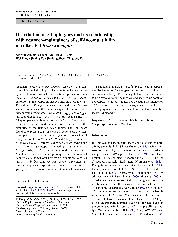摘要
Brassica napus (AACC, 2n = 38) is a self-compatible amphidiploid plant that arose from the interspecies hybridization of two self-incompatible species, B. rapa (AA, 2n = 20) and B. oleracea (CC, 2n = 18). Self-incompatibility (S) haplotypes in one self-incompatible line and 124 cultivated B. napus lines were detected using S-locus-specific primers, and their relationships with restorer-maintainers were investigated. Two class I (S-I(SLG)a and S-I(SLG)b) and four class II (S-II(SLG)a, S-II(SLG)b, S-II(SP11)a and S-II(SP11)b) S haplotypes were observed, of which S-II(SP11)b was newly identified. The nucleotide sequence of SP11 showed little similarity to the reported SP11 alleles. The lines were found to express a total of eleven S genotypes. The self-incompatible line had a specific genotype consisting of S-II(SP11)a, similar to B. rapa S-60, and S-II(SLG)a, similar to B. oleracea S-15. Restorers expressed six genotypes: the most common genotype contained S-I(SLG)a, similar to B. rapa S-47, and S-II(SLG)b, similar to B. oleracea S-15. Maintainers expressed nine genotypes: the predominant genotype was homozygous for two S haplotypes, S-II(SLG)a and S-II(SP11)b. One genotype was specific to restorers and four genotypes were specific to maintainers, whereas five genotypes were expressed in both restorers and maintainers. This suggests that there is no definitive correlation between the distribution of S genotypes and restorer-maintainers of self-incompatibility. The finding that restorers and maintainers express unique genotypes, and share some common genotypes, would be valuable for detecting the interaction of S haplotypes in inter- or intra-genomes as well as for developing markers-assisted selection in self-incompatibility hybrid breeding.
- 出版日期2008-7
- 单位华中农业大学
